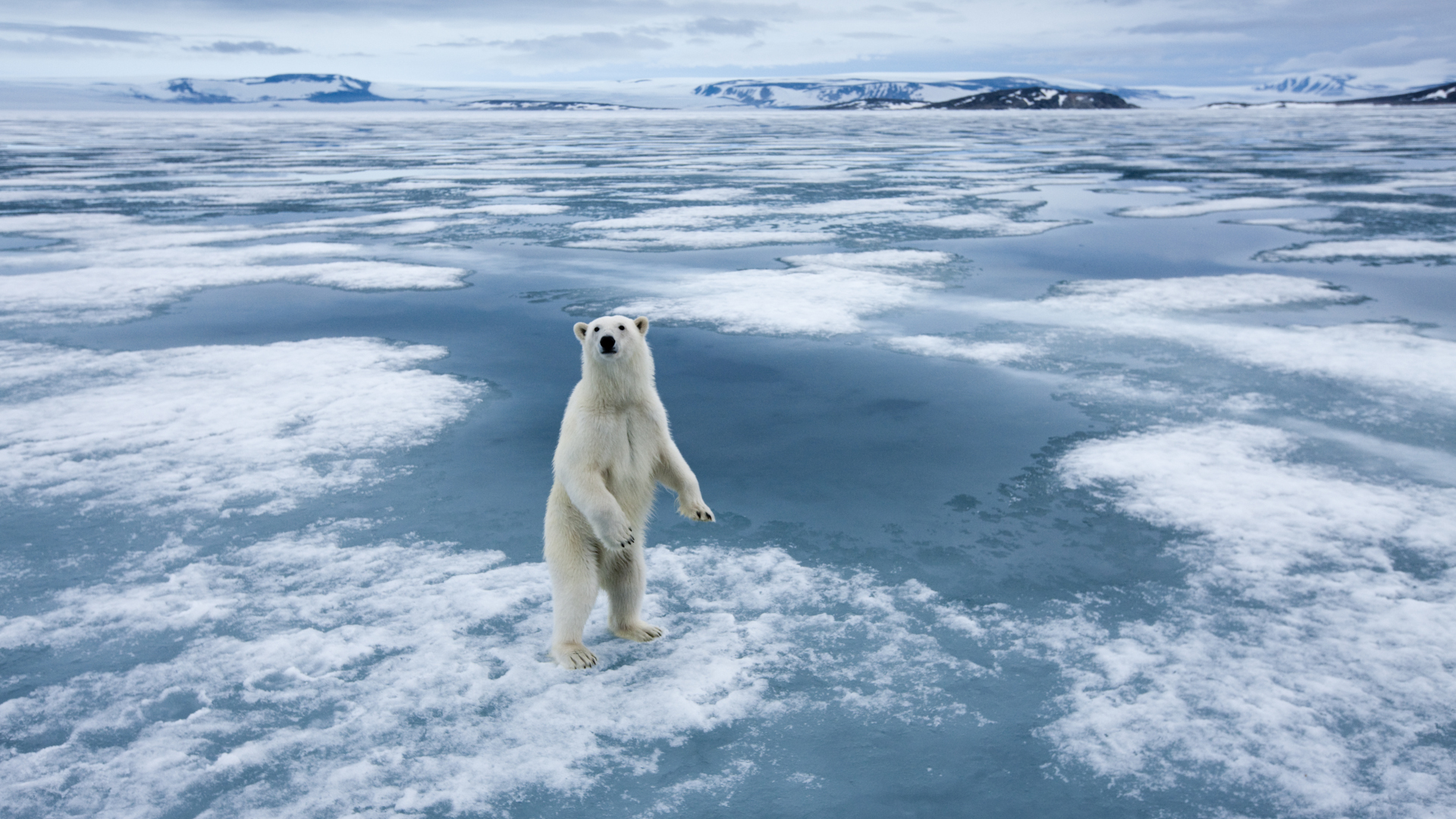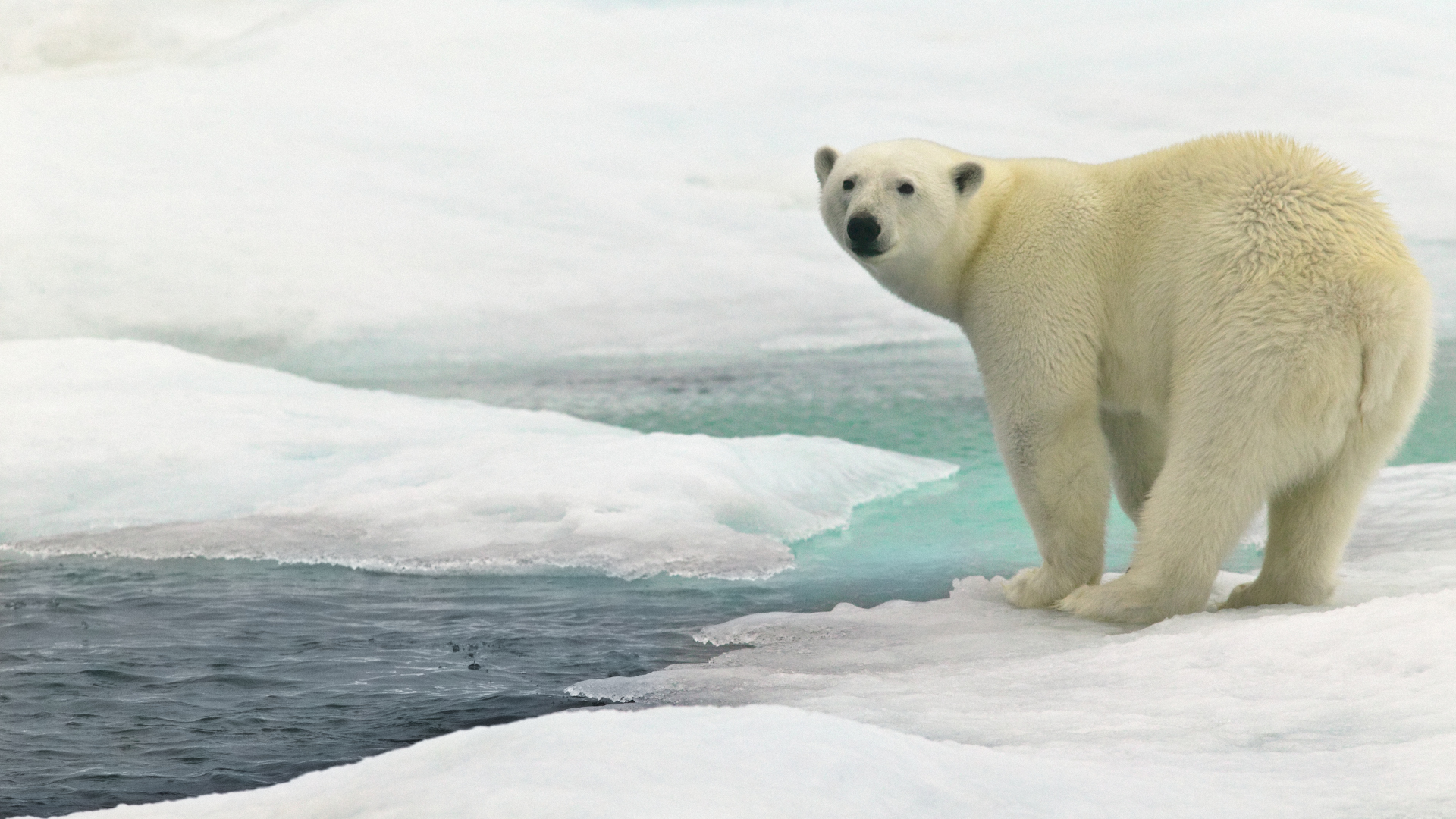"He has escaped the country and flown to Colorado" – mystery of the glacier-trotting polar bear solved
A report of polar bear tracks on one of Iceland's biggest glaciers sparked an investigation

The mystery of a series of polar bear tracks which appeared on an Icelandic glacier this week has been solved. Polar bears are not native to the island nation, though they do occasionally hop an iceberg ride over from Greenland, so when a set of tracks that appeared to be large enough to suggest a polar bear had trekked across the Langjökull ice cap, local officials were quick to launch an investigation.
On Wednesday, RÚV, The Icelandic National Broadcasting Service, reported that a hunter had alerted the police to the presence of what he believed might be polar bear tracks on the ice cap, some 80km from the coast.
Polar bear attacks are rare, but they do happen and incidents are on the rise. In 2013, a 49-year-old hiker from Maine was attacked by a polar bear while sleeping in his tent during a fjord expedition in northern Canada. More recently, in August 2022, a polar bear attacked a group of campers in Norway’s Svalbard islands, the same location where a group of British teenagers were attacked in 2011, leaving one dead.
Consequently, the Icelandic Coast Guard leapt into action to get to the bottom of the sighting.
"These animals can travel long distances and we take all such reports seriously and investigate. The Coast Guard was ready to fly and then you can inspect from the air, which is the fastest," says local senior police officer Ásmundur Kristinn Ásmundsson, senior police officer in an interview with RÚV.

Just a few hours later, however, a local guide by the name of Arngrímur Hermannsson announced on Facebook that the real source of the footprints was none other than Colorado ski mountaineer, Jon Kedrowski, who along with Colin O' Brady was up on Langjökull last week practicing for a cross-country skiing trip to Antarctica.
Kedrowski, best known for his book Sleeping at the Summits, is not exactly diminutive in stature, but neither is he the size of a bear. His feet are only a slightly above average US size 12, according to Hermannsson. The real issue, it turns out, was blisters.
All the latest inspiration, tips and guides to help you plan your next Advnture!
"Jon got rented skiing shoes that hurt him so after two days he packed up his shoes and put on huge cold boots like they wear in the Antarctic when camping," writes Hermannsson.
"He stepped on these shoes, (which) are more like giant socks, the next 4 days around Langjökull."
His giant shoes were what left polar-bear sized tracks on the glacier, and now Icelanders and the local seal population can breathe a sign of relief – though Hermannsson warns Coloradans might want to look out.
"Now he has escaped the country and flown to Colorado with Icelandair where you will find the polar bear."
According to Guide to Iceland, Langjökull is the second largest ice cap in Iceland, after Vatnajökull. It is situated west of the Icelandic interior, in the Highlands of Iceland. The ice is up to 1,900 feet thick and the highest point of the ice cap is about 4,757 feet above sea level.
Julia Clarke is a staff writer for Advnture.com and the author of the book Restorative Yoga for Beginners. She loves to explore mountains on foot, bike, skis and belay and then recover on the the yoga mat. Julia graduated with a degree in journalism in 2004 and spent eight years working as a radio presenter in Kansas City, Vermont, Boston and New York City before discovering the joys of the Rocky Mountains. She then detoured west to Colorado and enjoyed 11 years teaching yoga in Vail before returning to her hometown of Glasgow, Scotland in 2020 to focus on family and writing.

